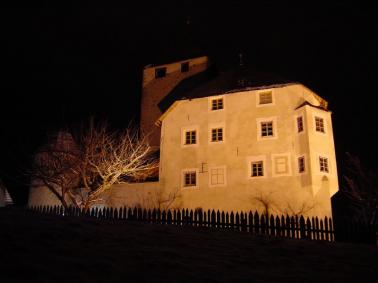Short history of Val Badia
From the early days of prehistoric hunters to the dawn of mass tourism

There is sure evidence that Val Badia was already inhabited in the pre-historical era, even though by a few people and not permanently. The evidences were found on Passo Erbe and on the "Pozes" Alp, dating from a period between 7000 and 5000 B.C., to show that the ladin territory was already attended by hunters during the warm season.
The first stable settlements in Val Badia are then reported by the important archeological evidence found at the end of the 80s by the "Sotciastel" at Pedraces in the municipality of Badia. The small established community was composed by farmers and shepherds and is to be presumed that the small village was found between the end of the XIII and the XVI century B.C.
In this period the Val Badia was mainly populated by pre- Indo-European populations also called "Celts". These result being the first populations to have introduced some lifestyles still alive nowadays in the ladin population. The millet and oat plantation and the dairy products production have been practiced for the very first time in the Dolomites by these ancient inhabitants.
The first great changes in the history of Val Badia came in the year 15 B.C., when the Roman Legions conquered the Alps. Under Druso’s and Tiberio’s command, following a cruel battle in the region of Bolzano, the Romans revolutionized the political and administrative organization of the Alps and the vulgar ladin mixed with the subdued populations.
The Romans assigned to the tribal compound established in Ladinia, at the moment of the conquest, the name of "Rhaeti". With the generations passing on, from the fusion of the rhaetian idioms with the vulgar latin, the ladin language was born.
Little is known about Val Badia, or about the other ladin valleys, from the first centuries of the Middle Ages. A few years later the year 1000 we attend a change of the landowners of Val Badia. During the year 1027 the clerical organization transforms Bressanone into the Episcopal Principality.
In this occasion, the orographic left part of the land, such as the municipal territory of San Martino in Badia (San Martino with Piccolino and Ju, Longiarù and Antermoia), but also the locality of Rina, was granted from the Emperor Conrad II to the Bishop of Bressanone (1027).
Around the year 1030, on the contrary, Volkhold, the Count of Pustertal Valley, offered the orographic right part of the Val Badia - this means Marebbe, La Valle, San Leonardo, San Cassiano, La Villa and Corvara – to the cloister of the Benedictines of Castel Badia (in the surroundings of San Lorenzo of Sebato). This one the period where the term "Badia" appears for the very first time, deriving in fact from "Ciastelbadia".
These conditions of the land tenure remained the same for about 800 years. Only after the suspension of the cloister of Castel Badia, declared by Emperor Joseph II (1785), and with the secularization of the Episcopal Principality of Bressanone (1803), the population of our valley was directly subdued by the State Tyrol. Afterwards with the invasion of the Napoleonic troops, Val Badia was annexed to Bavaria.
World War I caused many losses and massive devastation of the ladin valleys of the Dolomites. During four long years, the whole territory of the Dolomites was transformed in a war scenario, in which numerous local soldiers died. Nowadays the traces of these fights are still visible in many places.
With the end of the Great War, in the year 1919, Val Badia, along with the entire South Tyrolean region, was definitely annexed to Italy, giving birth also to the touristic development of the valley, that, during the years, considerably increased.
Franz Kostner, alpine touristic guide of the Val Badia, for the first time encouraged tourism, especially the one of the winter season. He committed himself to make possible for tourists to reach the Val Badia by public means of transportation and in the year 1930 ensured the construction of the first chair lift of the entire Italian peninsula, that four years after opened its doors to the first ski school.
Another important date for Val Badia is 1972, when, with the so called "Pacchetto", the second Statute of Autonomy of the Province of Bolzano entered into force, and created the necessary preconditions for the ladin ethnic-linguistic group protection.


Comments:
You may also be interested for:
For your stay Ladinia recommends:
Ciasa Ploner
Haflingerhof
Fordi
Frapes